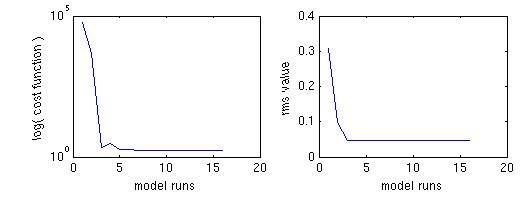CMAQ_ADJ v4.5.4: An adjoint model for EPA's Community Multiscale Air Quality(CMAQ)
Tianyi Gou (tygou@cs.vt.edu), Kumaresh Singh (kumaresh@cs.vt.edu) , and Adrian Sandu (sandu@cs.vt.edu)
in collaboration withAmir Hakami(Carleton U.), Peter Percell (U. Houston), Tianfeng Chai (NOAA), Daewon Byun (NOAA), and John Seinfeld(Caltech)
Summary
CMAQ_ADJv4.5 is an adjoint model for EPA's Models-3/Community Multiscale Air Quality (CMAQ) modeling system. With the development of this adjoint model, CMAQ is now capable of performing sensitivity tests and 4D-Var data assimilation. A detailed description on how to install the package and perform these tests, are provided in the user's manual available for download. Benchmark results have also been included in the manual.
CMAQ_ADJv4.5 was developed with support from Houston Research Council through awards H59 and H98.
Download
| Source Code for CMAQ_ADJ Models (2008): tar.gz (4.69 MB). | |
| Source Code for CMAQ_ADJ Scripts (2008): tar.gz (224 KB). | |
| User's Manual (2008): pdf (231 KB). | |
| Source Code, Virginia Tech version (Jan. 2010): tar.gz (752 KB). | |
| Source Code, U. Houston version (Jan. 2010): tar.gz (209 KB). | |
| CMAQ 4D-Var report for H98 project (Dec. 2009): pdf (1.8 MB). |
Overview
The Models-3 CMAQ is a multi-pollutant, multiscale air quality model that contains state-of-science techniques for simulating all atmospheric and land processes that affect the transport, transformation and deposition of atmospheric pollutants and/or their precursors on both regional and urban scales.
Sensitivity calculations aid in solving many problems in science and engineering including data assimilation, stability analysis, investigations
of various physical and chemical mechanisms, optimal control, etc. Our main interest is data assimilation, the process to optimally integrate real
world observations into the model's forecast cycles, provide a check on model error growth and contribute to the initial conditions for the
next model run.
Results
Sensitivity analysis is an approach to quantify the changes in output due to different sources of variation. Since adjoint calculations are receptor based, one can calculate the sensitivity of an output with respect to large number of parameters. In a sample test case, we consider a receptor measuring ozone at the final time at a given location. We compute its sensitivity with respect to changes in various grid species at earlier times. A tile plot for dO3/dNO2 is provided as follows:

4D-Var data assimilation allows the optimal combination of three sources of information: an a priori (background) estimate of the state of the atmosphere,
knowledge about the physical and chemical processes that govern the evolution of pollutant fields as captured in the chemistry transport model (CTM), and
observations of some of the state variables. In the sample test case, we have perturbed ozone and retrieved ozone only. To validate the data assmiliation
test-bed, a set of plots are generated; one with the difference (Cperturbed - Cactual) and the other with (Coptimized - Cactual).The idea is to illustrate the
fact that data assimilated concentration fields are the best estimates of the original concentration fields.

